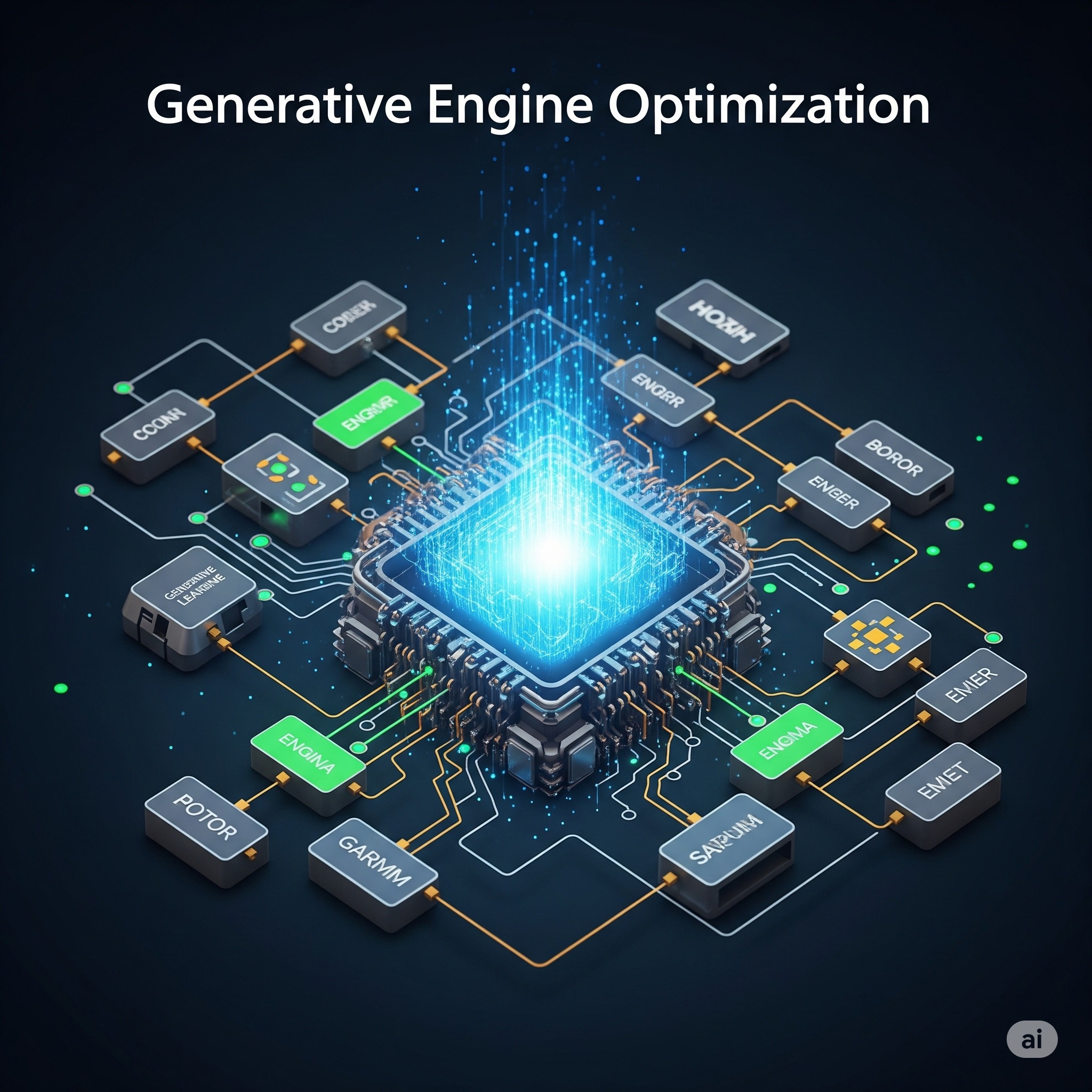What is Generative Engine Optimization?
 Emeruche Cole
Emeruche Cole
Once upon a time in the realm of digital marketing, there was a revolutionary concept that changed the way businesses approached online visibility: Search Engine Optimization, or SEO. As Google began to dominate the search landscape in the early 2000s, savvy marketers recognized the power of optimizing website content to rank higher in search results. The marriage of keyword strategy, backlinks, and user experience became the holy grail for driving traffic and engagement. Fast forward to today, and we find ourselves in a world where content marketing has evolved into a sophisticated ecosystem, thanks to the rise of generative AI tools like ChatGPT, Claude, Perplexity, and Gemini.
These AI models are not just reshaping how we create content; they are redefining the very essence of how we think about optimization. Enter Generative Engine Optimization (GEO), a modern approach that focuses on optimizing content not for traditional search engines but for generative AI models that deliver direct, conversational answers to user queries. As we navigate this new landscape, it's essential to understand what GEO entails, how it influences content strategy, and the key strategies that can enhance your efficacy in this evolving domain.
The Shift from SEO to GEO

Traditional SEO was primarily concerned with aligning content to the algorithms of search engines, ensuring that keywords were strategically placed and that backlinks were acquired to boost authority. However, with the advent of generative AI, the paradigm is shifting. These AI tools do not just index and rank content; they generate it, providing users with concise, relevant responses drawn from a vast array of sources. This means that the focus of content creators is no longer solely on driving traffic to their websites but also on ensuring that their content is optimized for these AI's understanding and generation processes.
Generative AI is built on complex algorithms that analyze language patterns, context, and user intent. As a result, content must be structured and presented in a way that these models can easily parse and utilize. GEO is thus born out of the necessity to adapt content strategies to a world where AI is the intermediary between the creator and the consumer.
Key Strategies for Generative Engine Optimization
As we embrace GEO, there are several critical strategies to consider that can help ensure your content resonates with both AI models and human readers.
1. Writing Factual and Easily Digestible Content
Generative AI thrives on clarity and accuracy. Therefore, it is essential to focus on factuality in your content. Information must be presented in a straightforward manner, free from jargon and complex language that could confuse both AI and users. Short paragraphs, bullet points, and clear headings can enhance readability, making it easier for generative models to extract relevant information.
2. Using Explainer or Q&A Formats
Generative AI tools often pull data to answer specific questions. Creating content in an explainer or Q&A format can significantly enhance the chances of your information being utilized by these models. Structuring your content to address common queries or to explain key concepts can help ensure that your insights are the ones that generative engines serve up when users seek answers.
3. Including Authorship and Trust Signals
In a world filled with misinformation, trust is paramount. Including authorship and credibility markers in your content can help establish authority. This can be achieved by integrating author bios, references to reputable sources, and statistics from trusted organizations. Generative AI models favor content that demonstrates expertise and reliability, making this an essential aspect of GEO.
4. Structuring Content for Machine Parsing
To enhance the likelihood of your content being recognized and used by generative AI, it’s vital to structure it in a way that machines can easily parse. This includes using clear headings, subheadings, and well-organized sections. Incorporating schema markup can also improve how search engines and generative models understand the context of your content, thereby enhancing its visibility.
5. Making Content Accessible to Real-Time Engines and Prompting Communities
Generative AI is continually learning and adapting. Therefore, your content should be accessible and relevant to real-time engines. This means keeping your information up-to-date and engaging with communities that share your content. By fostering dialogue and encouraging interaction, you can enhance your content's relevance and visibility in the eyes of generative engines.
Moreover, tools like Crosspost are already helping creators prepare for this shift by making multi-platform publishing effortless. By allowing content creators to write once and publish across various platforms, Crosspost simplifies the distribution process and aligns seamlessly with GEO principles. This ensures that your optimized content reaches diverse audiences, maximizing its impact.
Conclusion
As we stand on the precipice of this new era in content strategy, Generative Engine Optimization is a powerful concept that every content creator should embrace. By understanding the core principles of GEO and implementing key strategies, you can ensure that your content not only meets the needs of traditional search engines but also resonates with generative AI models that shape the future of information retrieval.
For those eager to delve deeper into the capabilities of modern tools in this evolving landscape, I invite you to explore this blog post. This resource will provide you with further insights into how you can streamline your content generation processes while adapting to the shifts in digital marketing.
In the world of content creation, staying ahead of the curve is not just advantageous; it is essential. Embrace GEO, adapt your strategies, and watch your content thrive in the age of generative AI.
Subscribe to my newsletter
Read articles from Emeruche Cole directly inside your inbox. Subscribe to the newsletter, and don't miss out.
Written by
